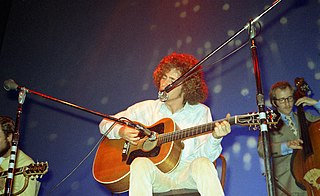
Timothy Charles Buckley III was an American musician. He began his career based in folk rock, but subsequently experimented with genres such as psychedelia, jazz, the avant-garde, and funk paired with his unique five-octave vocal range. His commercial peak came with the 1969 album Happy Sad, reaching No. 81 on the charts, while his experimental 1970 album Starsailor went on to become a cult favorite. The latter contained his best known song, "Song to the Siren." Buckley died at the age of 28 from a heroin and morphine overdose, leaving behind sons Taylor and Jeff.

Blue Afternoon is the fourth studio album by Tim Buckley, released in November 1969. It is Tim Buckley's first self-produced record and his debut for Herb Cohen and Frank Zappa's label Straight Records. The album used the same group of musicians as Happy Sad (1969) with the addition of drummer Jimmy Madison. It presaged Buckley's most experimental work on his subsequent two albums.

Happy Sad is the third album by American singer-songwriter Tim Buckley, released in April 1969. It was recorded at Elektra Sound Recorders in Los Angeles, California and was produced by former Lovin' Spoonful members Zal Yanovsky and, coincidentally, his subsequent replacement Jerry Yester. It marked the beginning of Buckley's experimental period, as it incorporated elements of jazz that he had never used before. Many of the songs here represent a departure from the binary form that dominated much of his previous work.

Lorca is the fifth studio album by singer-songwriter Tim Buckley, released in 1970 on Elektra Records. It was named after Spanish poet Federico Garcia Lorca, and was recorded simultaneously with Blue Afternoon (1969), though notably different in style. Its avant-garde approach breaks away from traditional songwriting styles, such as the verse/chorus binary form.
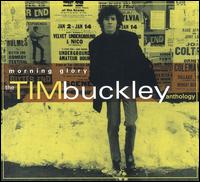
Morning Glory: The Tim Buckley Anthology is a compilation album by Tim Buckley. The two cds give an overview of Tim Buckley's career. The compilation contains material from the many phases of Buckley's career, and includes a previously unreleased version of "Song to the Siren", as performed in 1968 on The Monkees. The photo used for the cover art was taken by Linda Eastman, more commonly known as Linda McCartney.

Dream Letter: Live in London 1968 is a live album by Tim Buckley. The album was recorded in Queen Elizabeth Hall, London, England on October 7, 1968. Due to a lack of available funds Buckley was unable to tour with regular bass player John Miller and conga player Carter "C.C." Collins. The concert instead features bassist Danny Thompson, guitarist Lee Underwood and vibraphone player David Friedman.
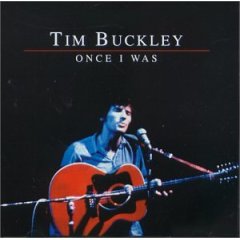
Once I Was is a compilation album by Tim Buckley. The album features the Peel sessions recorded 1 April 1968, two tracks, "Honeyman" and "Dolphins", from a BBC broadcast of The Old Grey Whistle Test on 21 May 21 1974 and finally "I Don't Need It to Rain" taken from the 12 October 1968 live show in Copenhagen. This collection features the same track listing as the Morning Glory compilation, with the sole difference being the inclusion "I Don't Need It to Rain". Buckley and his band are accompanied by famed Danish jazz double bassist Niels-Henning Ørsted Pedersen on this track due to the unavailability of Buckley's regular bassist for the 1968 European tour.

Troubadour is the fourth studio album by J. J. Cale. Eric Clapton covered the song "Cocaine" on his 1977 album Slowhand, turning it into one of his biggest hits.
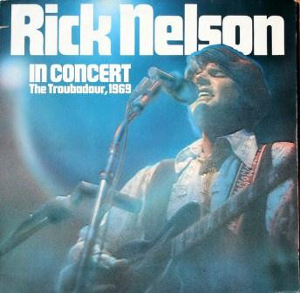
In Concert at the Troubadour, 1969 is a live country rock album by Rick Nelson recorded in Los Angeles during four dates at The Troubadour in late 1969. The album featured the debut of the Stone Canyon Band, which included Randy Meisner, Tom Brumley, Allen Kemp, and Patrick Shanahan, and was Nelson's highest-charting release in three years. The album contains four songs written by Nelson and three Bob Dylan compositions, as well as other songs by Eric Andersen and Tim Hardin. The performances were attended by many fellow musicians and songwriters.

Jewels for Sophia is the twelfth studio album by Robyn Hitchcock, released on Warner Records in 1999.

Beauty & Crime is the seventh studio album by singer-songwriter Suzanne Vega. It is her first album of new material since 2001's Songs in Red and Gray and her first for Blue Note Records. It was released on July 17, 2007. Beauty & Crime won the Grammy Award for Best Engineered Album, Non-Classical, on February 11, 2008. It was dedicated to Tim Vega, Suzanne's younger half-brother who had died in 2002.

Troubadour is the twenty-fifth studio album by American country music singer George Strait. It was released on April 1, 2008 on MCA Nashville Records. The album comprises twelve tracks, including two duets. The lead-off single, "I Saw God Today", was the highest-debuting single of Strait's career, and his forty-third Number One on the Billboard country charts. The album has been certified platinum by the RIAA. At the 51st Grammy Awards, Troubadour earned the Grammy Award for Best Country Album, the first Grammy win of Strait's career. The album was intended to include the song "Everybody Wants to Go to Heaven", but after Strait decided not to include it on the album, it was later recorded by Kenny Chesney, and was released as the first single from his album Lucky Old Sun. "It Was Me" was originally recorded by Jamey Johnson on his 2006 album, The Dollar.

Thin Wires In The Voice is a 120-page booklet written by Italian writer Luca Ferrari with a 3 track EP by Tim Buckley. The EP is a compilation of "Song to the Siren", featuring just Buckley's guitar and voice, recorded for the TV show The Monkees and two live recordings taken from a 1968 Danish radio broadcast. This earlier version of Starsailor track "Song to the Siren" is more folk-oriented and can also be found on Morning Glory: The Tim Buckley Anthology. The two live recordings are also found on Buckley's 1968 live album Copenhagen Tapes. The booklet is dual language appraisal of Tim Buckley in Italian and English. It also contains selected lyrics and poetry.

Copenhagen Tapes is a live album by Tim Buckley. It was recorded in Copenhagen, Denmark on October 12, 1968 and was broadcast later on Danish radio. The live performance features songs from Happy Sad, however "I Don't Need It to Rain" was only recorded in concert and no studio version is believed to exist.

Peel Sessions is a live album by Tim Buckley. It was recorded in studio 1 at 201 Piccadilly London, UK on 1 April 1968, as a session recording for BBC radio DJ John Peel. The session was subsequently broadcast six days later on 7 April 7, 1968. The session consists of folk-oriented songs from Buckley's Goodbye and Hello - Blue Afternoon period recorded in a sparse manner with only Tim's vocals, two guitars and percussion. Peel would later comment on this session as one that "defines essential music".

Morning Glory is a compilation album by Tim Buckley. The album is a compilation of the Buckley's 1968 John Peel session and two further tracks taken from the May 21, 1974 performance for, BBC TV music series, The Old Grey Whistle Test. The performance of "Dolphins" is also available as a video on 2007 DVD release Tim Buckley: My Fleeting House.
"Song to the Siren" is a song written by Tim Buckley and Larry Beckett, first released by Buckley on his 1970 album Starsailor. It was also later released on Morning Glory: The Tim Buckley Anthology, the album featuring a performance of the song taken from the final episode of The Monkees.

Sing a Song for You: Tribute to Tim Buckley is a double CD studio album performed by various artists in tribute to 1960s musician Tim Buckley. The album is named after a Buckley song of the same name which is also the first track on the first disc. Tim Buckley died of an accidental overdose in 1975.
Lee Underwood is an American musician and journalist who played lead guitar with Tim Buckley for most of Buckley's career.
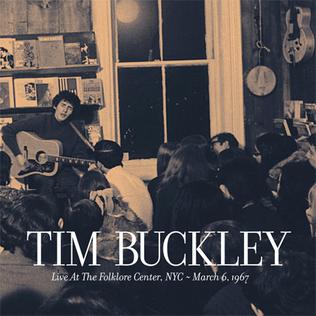
Live at the Folklore Center NYC 1967 is a live album by Tim Buckley. The album was recorded at the Folklore Center in New York City, March 6, 1967.


















